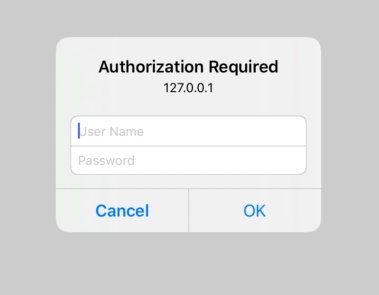# HTTP Authentication
UniWebView supports HTTP authentication by prompting the user to provide a username and password in a native way. You could use either HTTP Basic or HTTP Digest to set up the authentication flow. For more information about HTTP authentication on the server-side and to get a general idea, please refer to this documentation (opens new window).
# HTTP Authentication in UniWebView
UniWebView has a built-in support for HTTP authentication. When receiving a challenge of HTTP Basic or HTTP Digest, it will pop up a native alert to ask users for username and password.

Once the authentication gets passed, the username and password will be stored in a local database. This information is bound to host and realm from the requested protection space as a credential.
The persistence of stored credential is permanent, so your user will not be prompted again to re-authenticate until your server returns code 401.
NOTICE
On macOS, the credentials are stored in system Keychain. Depending on your settings of the corresponding item, there might be a chance that you cannot access Keychain item directly from Unity Editor. You need to change the Access Control of the keychain item to "Allow all applications to access this item". See this support article (opens new window) for more.
# Clear Stored Credentials
If the default permanent store strategy is not what you what, you could clear a certain credential as you need.
Call the ClearHttpAuthUsernamePassword static method on UniWebView and pass the host and realm.
On iOS, it will clear the credentials immediately and completely from both disk and network cache.
However on Android, it only clears from disk database, the authentication might be still cached in the network stack and will not be removed until next session (app restarting).
See documentation of ClearHttpAuthUsernamePassword for more.